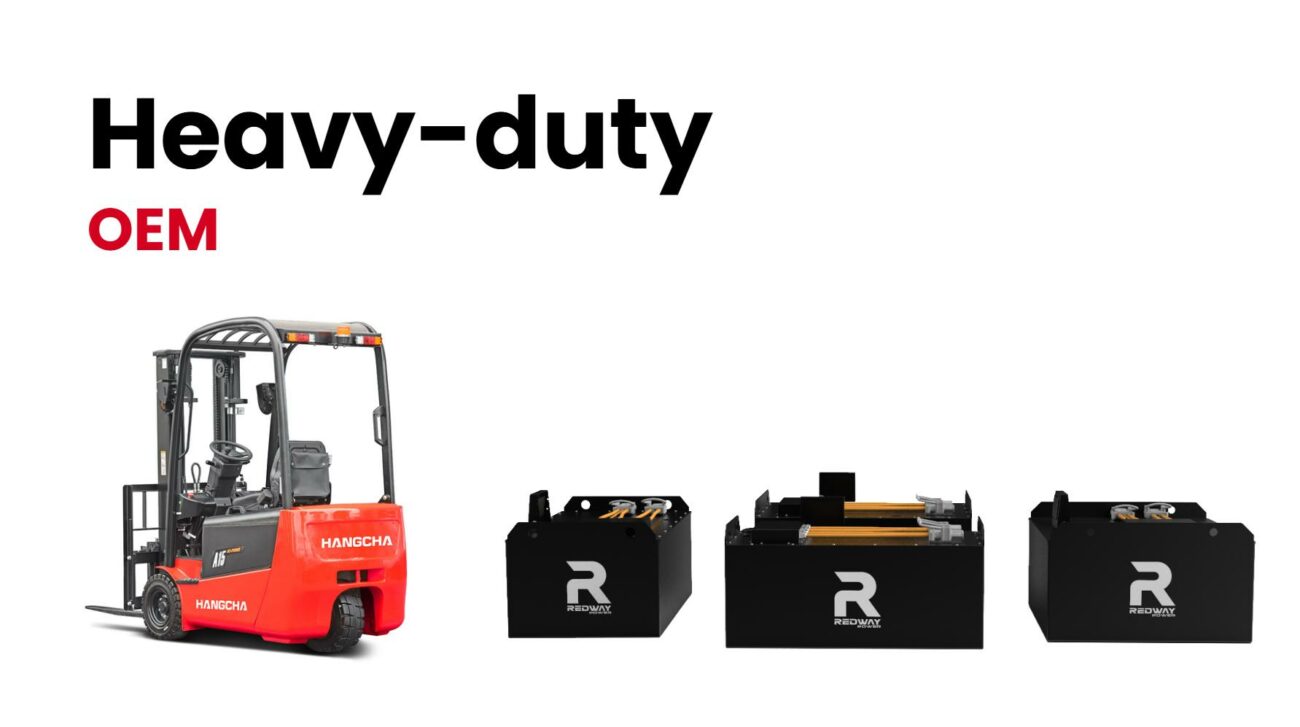A 24V forklift battery powers electric forklifts with efficiency, durability, and reduced operational costs. These batteries are designed for heavy-duty use, offering longer cycle life, faster charging, and compatibility with industrial equipment. Ideal for warehouses and logistics, they minimize downtime and enhance productivity while meeting rigorous safety standards.
24V 230Ah Lithium Forklift Battery
How Does a 24V Forklift Battery Compare to Other Voltage Options?
24V batteries balance power and weight, making them ideal for mid-sized forklifts. Unlike 12V batteries (suited for lighter tasks) or 48V/80V systems (for heavy machinery), 24V provides optimal energy density for moderate loads. They deliver sufficient torque without excessive bulk, ensuring versatility in manufacturing and仓储 environments.
| Voltage | Typical Use | Power Output | Forklift Type |
|---|---|---|---|
| 12V | Pallet jacks, walkie stackers | Low (1-2 kW) | Light-duty |
| 24V | Mid-sized counterbalance forklifts | Moderate (3-5 kW) | Medium-duty |
| 48V | Large container handlers | High (8-15 kW) | Heavy-duty |
The versatility of 24V systems makes them particularly valuable in multi-shift operations. For example, a distribution center using 24V-powered reach trucks can achieve 6-8 hours of continuous operation per charge, even when lifting 1.5-ton loads to 10-meter heights. Unlike 48V batteries that require reinforced chassis, 24V models maintain compact dimensions suitable for narrow warehouse aisles. Recent advancements in modular battery design also allow operators to hot-swap 24V units in under 3 minutes, significantly reducing equipment downtime during peak shifts.
What Factors Influence the Lifespan of a 24V Forklift Battery?
Key factors include:
- Charging cycles: Avoid partial charges to prevent sulfation.
- Temperature: Operate in 20–25°C ranges to avoid capacity loss.
- Maintenance: Regularly check electrolyte levels and clean terminals.
- Depth of Discharge (DoD): Keep DoD below 80% to extend cycle life.
| DoD Level | Lead-Acid Cycles | Li-Ion Cycles |
|---|---|---|
| 100% | 500 | 1,500 |
| 80% | 750 | 2,500 |
| 50% | 1,200 | 4,000 |
Temperature management proves critical in real-world applications. Batteries operating in 30°C environments lose 20% more capacity annually compared to climate-controlled 22°C facilities. Advanced thermal management systems using liquid cooling can extend calendar life by 3 years. Maintenance protocols should include monthly specific gravity tests for lead-acid units (±0.025 variation indicates imbalance) and quarterly cell voltage checks for lithium-ion packs. A 2023 study showed facilities implementing predictive maintenance A.I. reduced unexpected battery failures by 63% through real-time analysis of charging patterns and voltage curves.
Are Lithium-Ion 24V Forklift Batteries Better Than Lead-Acid?
Lithium-ion batteries outperform lead-acid in:
- Charging speed: 1–2 hours vs. 8–10 hours for lead-acid.
- Lifespan: 2,000–5,000 cycles vs. 1,000–1,500 cycles.
- Maintenance: No watering or equalization required.
- Energy efficiency: 95% vs. 80% efficiency.
However, lithium-ion has a higher upfront cost but lower TCO over time.
What Safety Protocols Are Critical for 24V Forklift Batteries?
Critical protocols include:
- Ventilation: Prevent hydrogen gas buildup in charging areas.
- PPE: Wear gloves and goggles during maintenance.
- Storage: Keep batteries in fire-resistant containers.
- Inspection: Test for cracks, leaks, and corrosion monthly.
“A 24V lithium-ion forklift battery is a game-changer for industries prioritizing uptime,” says a Redway Battery engineer. “Our clients report 30% fewer charging interruptions and 40% lower maintenance costs. However, proper thermal management is non-negotiable—overheating can degrade cells faster than any other factor.”
News
1. Solid-State Battery Pilots for Industrial Vehicles
Solid-state batteries are being tested in industrial forklifts, offering higher energy density and enhanced safety compared to traditional lithium-ion or lead-acid batteries. These batteries eliminate risks of thermal runaway and promise faster charging, aligning with Japan’s focus on next-gen energy solutions showcased at Battery Japan 2025.
2. AI-Optimized Battery Management Systems (BMS)
Advanced BMS now integrate AI-driven predictive analytics to optimize charging cycles, monitor health, and prevent failures. These systems, highlighted at InterBattery 2025, enable real-time adjustments based on usage patterns, extending battery lifespan by up to 25% and reducing maintenance costs.
3. Government-Backed Transition to Lithium Iron Phosphate (LFP)
South Korea and Japan are accelerating the shift to LFP batteries for industrial applications, driven by their lower cost and improved safety. Korean manufacturers like Samsung SDI are scaling production, while Japan’s revised policies incentivize LFP adoption in forklifts to meet sustainability goals.
Conclusion
24V forklift batteries are indispensable for efficient material handling. Whether choosing lead-acid for affordability or lithium-ion for longevity, adhering to maintenance and safety protocols ensures peak performance. Evaluate your operational needs and total cost of ownership to make an informed decision.
FAQs
- How long does a 24V forklift battery last?
- Lead-acid batteries last 3–5 years; lithium-ion lasts 8–10 years with proper care.
- Can I replace a lead-acid battery with lithium-ion?
- Yes, but ensure compatibility with your forklift’s voltage and charging system.
- What are the signs of a failing forklift battery?
- Reduced runtime, longer charging times, and swollen casing indicate failure.



